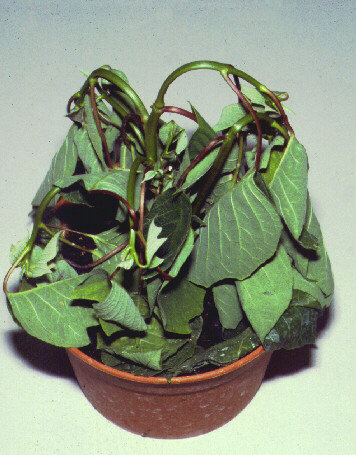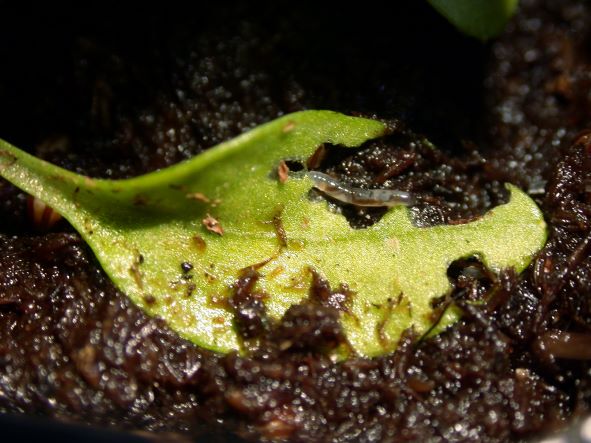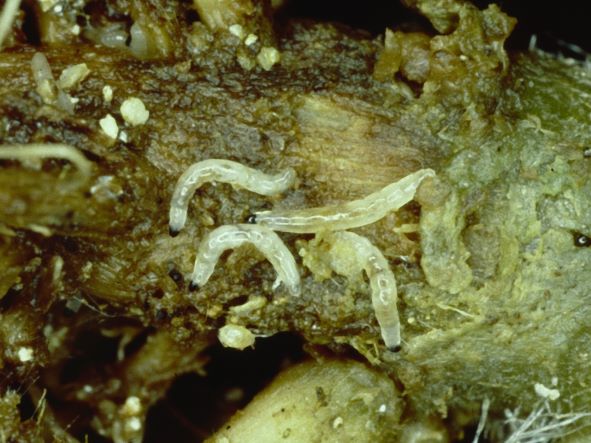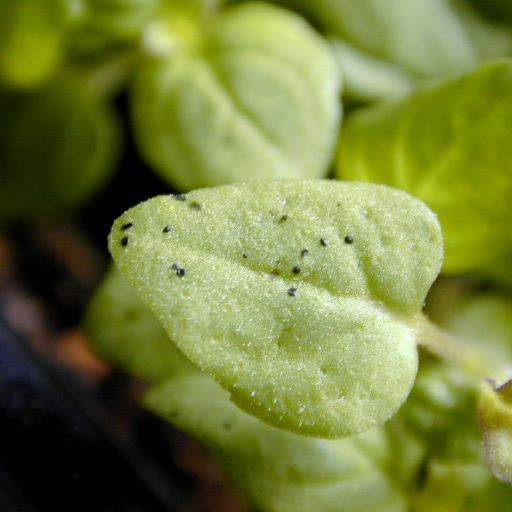Please click here to access the main AHDB website and other sectors.
- Home
- Knowledge library
- Sciarid fly damage and shore fly problems in protected ornamentals
Sciarid fly damage and shore fly problems in protected ornamentals
Recognise damage symptoms caused by sciarid fly larvae and problems resulting from shore flies in protected ornamentals.
Integrated control of sciarid and shore flies in protected ornamentals
Sciarid fly damage
Sciarid fly larvae feed on a range of materials, including decaying organic matter, plants and fungi. Although they are often secondary to disease, the larvae can also cause primary damage to roots and cuttings when they graze on the roots and tunnel up the stems of cuttings.
They are more damaging to young seedlings and cuttings than to older plants, causing poor plant vigour, wilting and even death. Older plants are less susceptible to damage, although heavy infestations can cause wilting and ultimate death. Wilting typically occurs on hot days when the damaged roots are unable to take up sufficient water.
Larvae can also feed on lower leaves resting on the growing media, and this damage can be confused with that made by slugs.
Adults can also be contaminants at marketing, where their presence can cause customer complaints or crop rejections, and they can also spread diseases, including species of Pythium, Fusarium and Verticillium. A wide range of protected ornamental plant species are susceptible to damage, including Cyclamen, Fuchsia, Pelargonium and poinsettia.
Wilting poinsettia caused by sciarid fly larvae root damage

Courtesy and copyright of ADAS Horticulture.
Grazing to lower leaf by sciarid fly larva

Courtesy and copyright of ADAS Horticulture.
Root damage caused by grazing of sciarid fly larvae

Courtesy and copyright of ADAS Horticulture.
Shore fly problems
Shore fly larvae feed on fresh green algae and do not damage plants directly. However, large numbers of shore fly adults are a nuisance to nursery staff, and the presence of flies or faecal specks on the plants at marketing can cause customer complaints or crop rejection.
In addition, shore flies can spread diseases. The adults can carry spores of Pythium species in their gut, which can germinate after excretion. The adults can also spread Fusarium oxysporum and Theilaviopsis basicola. Shore flies are often more numerous on slower-growing plants or in wet areas of the glasshouse.
Authors
Author – Jude Bennison. ADAS Horticulture.
Original author – John Buxton. ADAS Horticulture.
Webpage content correct as of May 2021.
Shore fly faecal specks on leaves can cause customer complaints

Courtesy and copyright of ADAS Horticulture.
Topics:
Sectors:
Tags:

